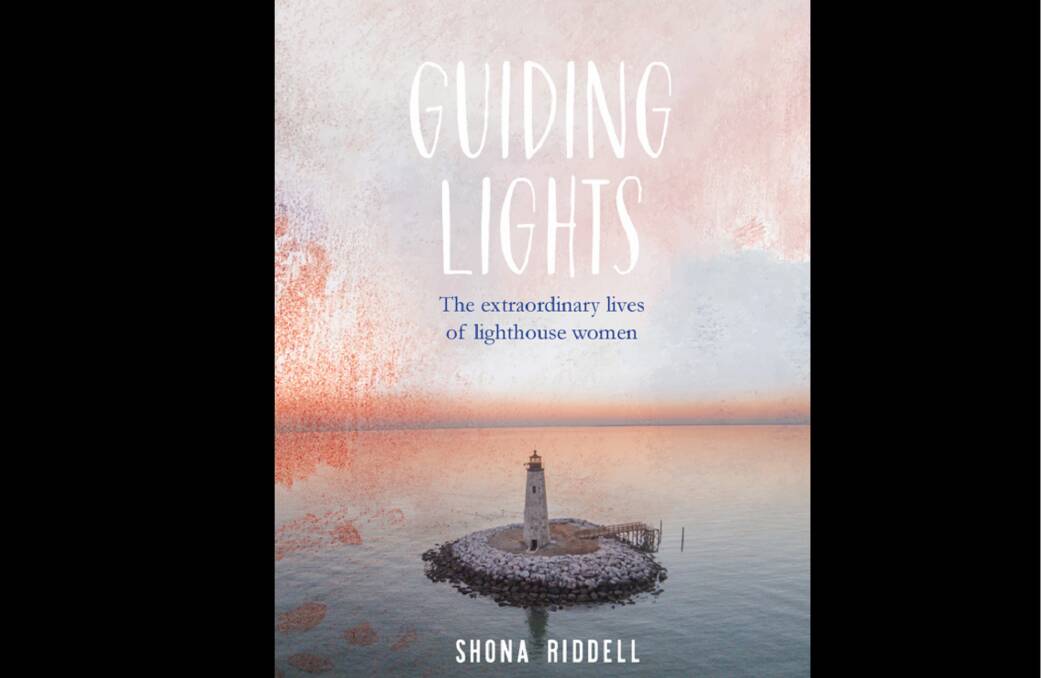
It takes an extraordinary person to be a lighthouse keeper tasked with keeping these symbols of hope for mariners alight in the most treacherous of conditions.
It's a lonely, exhausting, sometimes dangerous occupation, battling storms, blizzards, cyclones and hurricanes to keep the lights burning and enable the safe passage of ships; sometimes rowing out in the thrashing surf to rescue crew and passengers.
A job many might think more suited to a man. Yet throughout history women have been sole lighthouse keepers or assistant keepers, or the wives of keepers working in some of the most isolated parts of the world.
Shona Riddell has a long-held fascination with lighthouses and her new book Guiding Lights The extraordinary lives of lighthouse women is a tribute to these amazing women from around the world and throughout the centuries.
From Darkness to light, light to darkness. Lighthouses are a curious contradiction: they symbolise hope and trust, but also solitude and hardship.
- Guiding lights, Shona Riddell
The book shares the fascinating true stories of lighthouse women from Australia, New Zealand, the United KIngdom, North America, Canada, Europe, Japan and South America.
These stories include the brave and dedicated American women who worked as principal keepers in the 1800s while raising their children; 21st century caretakers living alone on Tasmania's wild Maatsuyker Island, home to Australia's southernmost lighthouse; the female keeper in charge of a remote lighthouse on Canada's Vancouver Island (the station receives visits from bears, cougars and wolves); tragic tales of abandoned towers from around the globe and two of the world's most legendary lighthouse woman Ida Lewis and Grace Darling who risked their lives to save others.
Guiding Lights also explores our perception of lighthouses: are they comforting and romantic beacons symbolising hope and trust, or storm lashed and forbidding towers with echoes of lonely souls.
Women have a long history of keeping the lights burning - from tending ancient altar flames or bonfires, to modern day lighthouse keeping, yet most of their stories are little known.
The original inspiration for Shona's book was Mary Jane Bennett, New Zealand's first - and only - female lighthouse keeper. A widow with six children (another had died in infancy) she took over her late husband's job and for 10 years efficiently managed the light on a headland near Wellington. First lit on January 1, 1859 it was New Zealand's first lighthouse but it's light hasn't shone since 1935.
Mary Jane Bennet's story can be found in chapter four.
Female lighthouse keepers were one of the earliest examples of women receiving equal pay for equal work and the book, while unable to contain a list of every single female keeper or assistant keeper, brings together stories from around the world to illustrate how women's experiences varied depending on the era, their circumstances and the location.
Some of the stories are heart warming, like that of Fay Catherine Howe of Breaksea Island, Albany, WA, who as a teenager communicated with the departing Anzacs as their ships left port using semaphore and Morse code, giving diggers a last chance to send a message home.
Others like the unlucky Bustard Head light in Queensland are chilling - its cursed history including the grisly death of a keeper's wife. There is also the fascinating stories of the disappearance of Theodosia Burr Alston in America in 1813 and the phantom piano music of Seguin light in the Gulf of Maine where a lighthouse keeper murdered his wife after taking an axe to her piano - then killing himself.
The book is richly illustrated with more than 100 historical and contemporary images.
About the author
Shona Riddell has a long-held fascination with lighthouses. A writer for 20 years (including her subantarctic history book Trial of Strength), Shona enjoys cold, windy weather and stories about remote locations.
Guiding Lights The extraordinary lives of lighthouse women. $39.95 published October 2020, Exisle Publishing www.exislepublishing.com


